Thanks to everyone who is supporting me here, your commitment gives me more time to devote to sharing my shop experience.
Painting furniture has become very popular. But when I became interested in woodwork, painting was very out of style. Everything was “natural”. But the grain! The natural beauty of the material! We were choking on wood which led to fake and cheap wood grain on everything. I’m very much a Gen Xer, so I’m always looking with a cynical eye for something that I can be anti towards. When I realized that I could make chairs and paint them, I was thrilled, it felt very punk rock. So for years, I refused to do any finish but paint. It was a challenge to myself and my customers to appreciate the work for something other than it’s resemblance to basement wood paneling.
But in true contrarian fashion, I soon wanted to push against my acceptance of paint and try my hand at a clear finish. This shift was more challenging than I expected. I had to contend with the color and visual competition of the wood when designing. I don’t make “traditional” chairs unpainted, I find the grain pattern on the shapely parts too active and distracting from the overall form, plus, the variety of woods can be an unwelcome contrast. So I had to learn to make forms that were simpler to lower the volume on the grain pattern and still be harmonious. It still surprises me how far just a little shaping will go when leaving the wood grain showing.
Finding the right coating also became a challenge. Again, my past came back to haunt me with visions of plasticky, yellowing, chipping polyurethane. I needed to find a hard wearing finish that would stand up to daily use and not look like it was coated in honey. I’ve tried lots of solutions. Some never dry, others water spot easily, a few shine like the sun and most get me high.
Here is what I want from a clear finish. It has great water resistance but doesn’t look like a thick coating. It’s durable over time, easily renewable and doesn’t turn sickly yellow. I also want the surface to have a good feel, not too much friction, but not be slide out of the seat waxy. Most importantly, it has to be fast and easy to apply in a shop that isn’t pristine and dust free.
Here is what I’ve found. It’s a two product application. I start with a varnish coating. I don’t have strict requirements on this part and lots of different products will do the job. This step is just meant to soak into the wood and form a layer mostly beneath the surface that will protect the wood from dirt and water. I have had great results with Tru Oil, which is a gun stock finish. It dries and builds up quickly, although it is not at all non toxic, so take care. I just apply a coat and let it dry, then I burnish it with a Mirka Mirlon Gold pads or Grey Scotchbrite and sand any raised grain with 320 grit. Then I apply a second coat. If I want more, I do a third, burnishing again inbetween. I do this process with other varnishes, such as the Sutherland Wells Product pictured below, which isn’t as intense as the Tru Oil, but also not nearly as toxic. It doesn’t build to as obvious a coating, but water beads on it just as well. I’ll probably use this stuff going forward. (thanks to David Douyard for the tip)
Once I have a solid undercoat, I use the Saicos hard wax oil pictured above. I get it from worldclasssuppy.com (no sponsorship just easy). I found that the varnish alone tends to have “hot” spots where I get uneven reflection and the surface doesn’t feel very inviting. But the hard wax oil takes care of both issues. I apply it with the Mirka Gold, which is just a scotch brite with a softer substrate so it is more moldable to shapely parts. Then I wipe it off, let it dry and do it a second time. This gives a more even satin sheen and a “soft” feel. Why not just use the Saicos? I could, but I like the thin varnish oil to soak in deep so the protection is more in the wood than on top of it.
Here is the result.
I had to work the get the reflection you see, mostly it looks kinda naked and the sheen will die back a bit over time.
From the second coat of the oil varnish, the water resistance is strong.
I especially like the way this finish makes woods with different porosity look even. Let me know what you think.


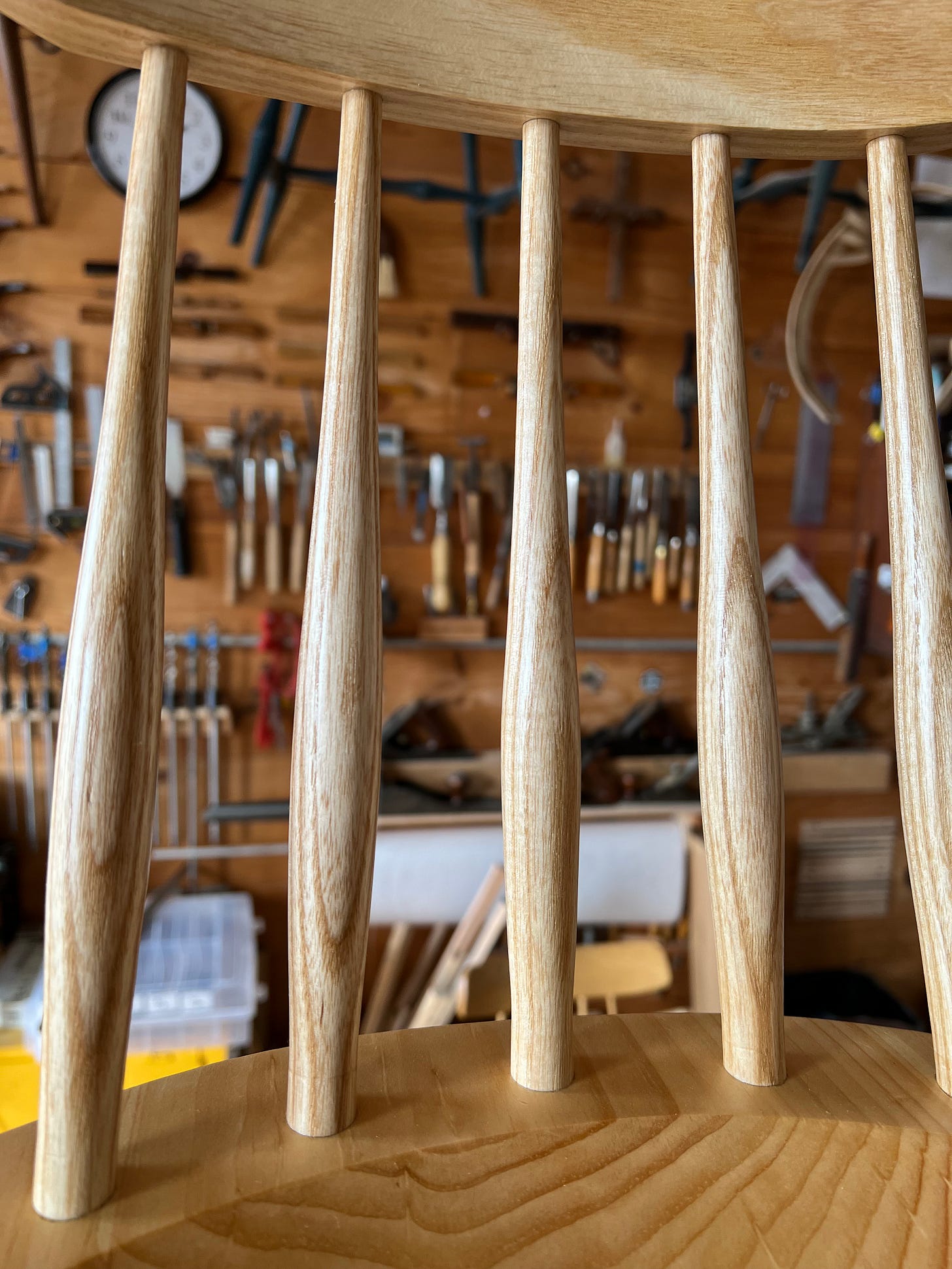
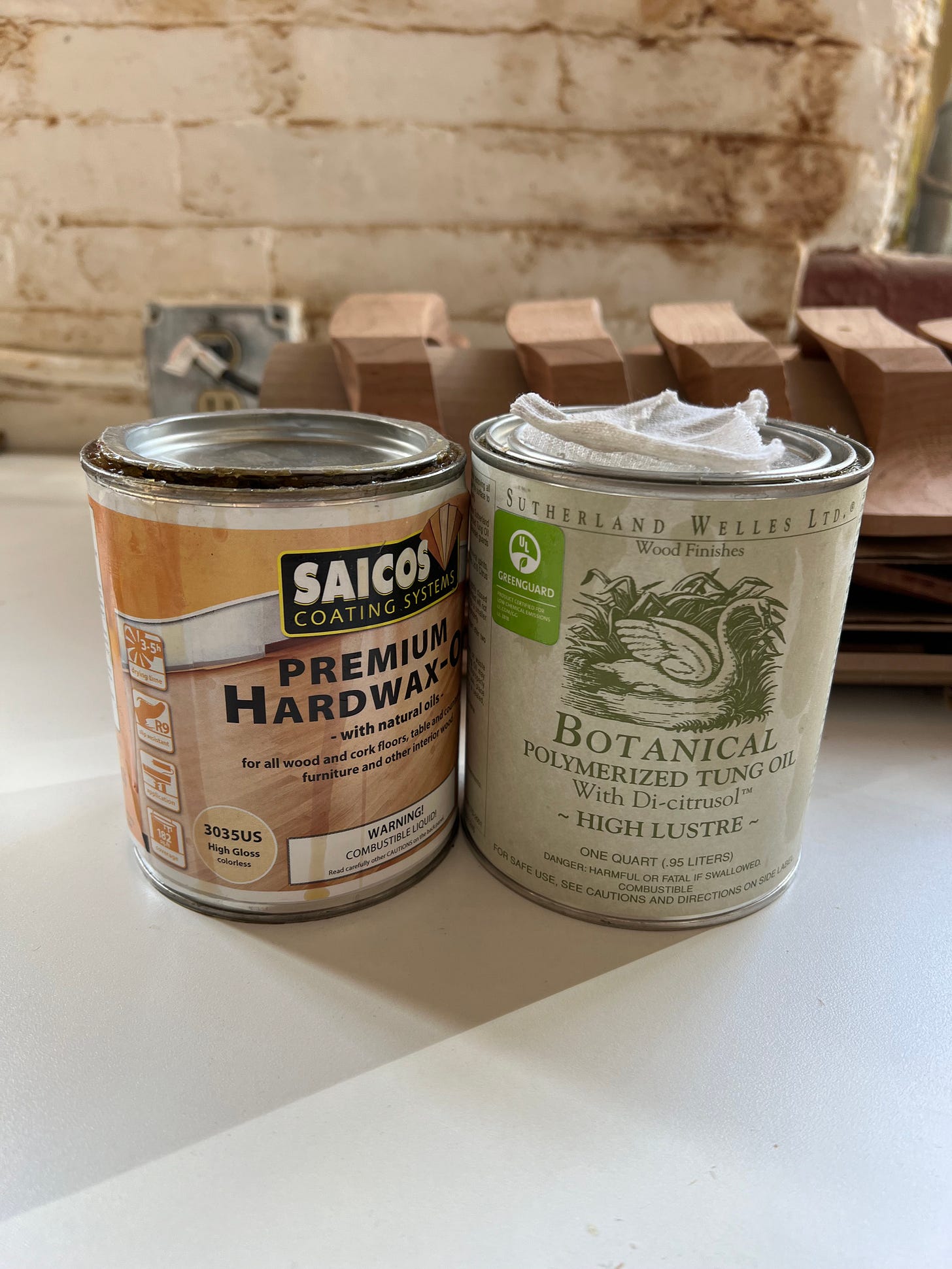
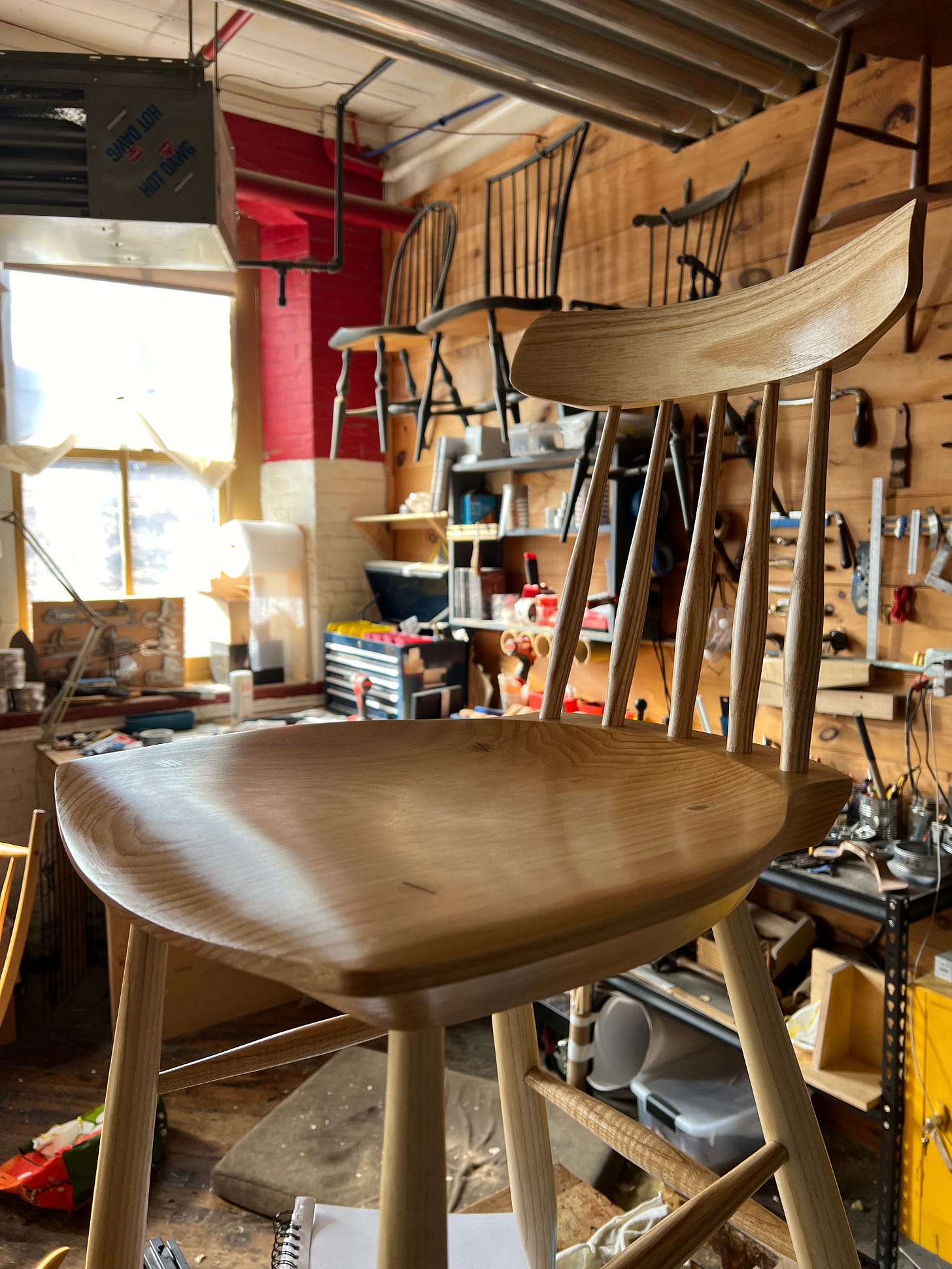
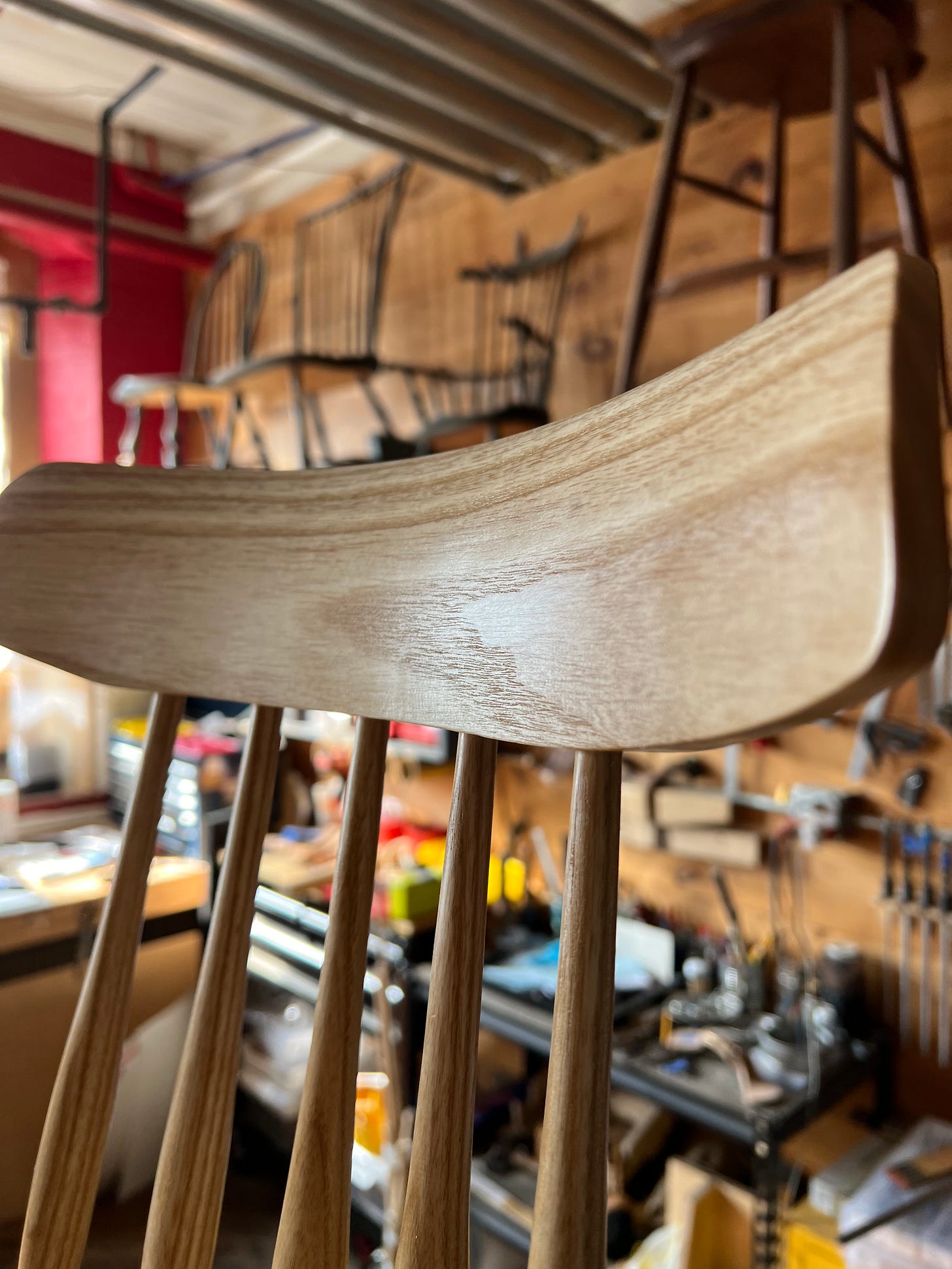
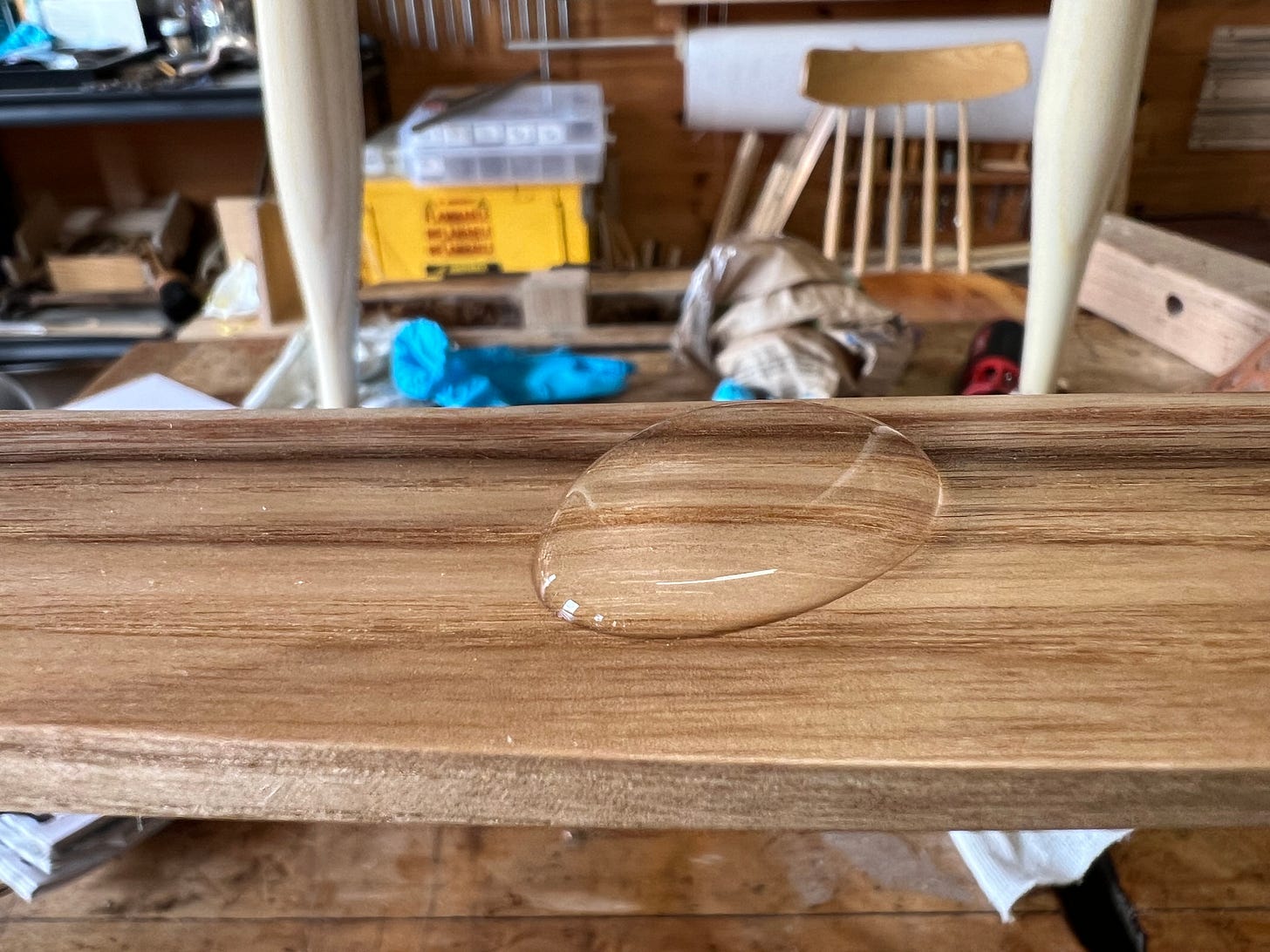
As always thanks for all the knowledge you continue to share. I still remember meeting you in 2010, you were teaching a class at CFC in Maine in the adjacent shop. I was able to observe the class throughout the two weeks I was there. We had a conversation about why you paint your furniture over lunch. I am literally that person who would have said “but the grain!” You very kindly and calmly explained your view and immediately changed my viewpoint on wood, finishing and woodworking, for the better.
Now on to my two cents on finishing. For the varnishing step, if you are still curious and willing to experiment, try out Le Tonkinois. You can find it at solventfreepaint.com. I have been messing around with it over the years and has been my go to when I want a varnish. More recently, I have been experimenting with Heron Paints linseed oils. I have been amazed at the build and sheen of the double boiled linseed oil. I still need to do more experimenting and durability testing, but so far applied thin and simply, it seems to fully cure in less than 24 hrs. Travis, owner of Heron Paint, has been very generous in sharing info. He washes and processes the linseed oil himself, and gets the raw cold pressed oil from farms here in the USA. My limited time messing around with his various oils has genuinely changed my mind about linseed oil (which I had mostly abandoned).
Last note, if you have not tried Hassui Ceramic, you really should. It’s wild stuff. I have been using it on spoons and some other woodenware for about a year, and it still boggles my mind. Got to let the stuff cure for 20 days for woodenware, but it’s dry to the touch in hours. Jarrod and Jasmine sell it through their website: woodspirithandcraft.com
Thanks for the post Pete, much appreciated. My question: is there a reason why you wouldn't suggest the old default oil-varnish made of equal parts of boiled linseed oil, Minwax spar (or other resin varnish), and odourless mineral spirits?